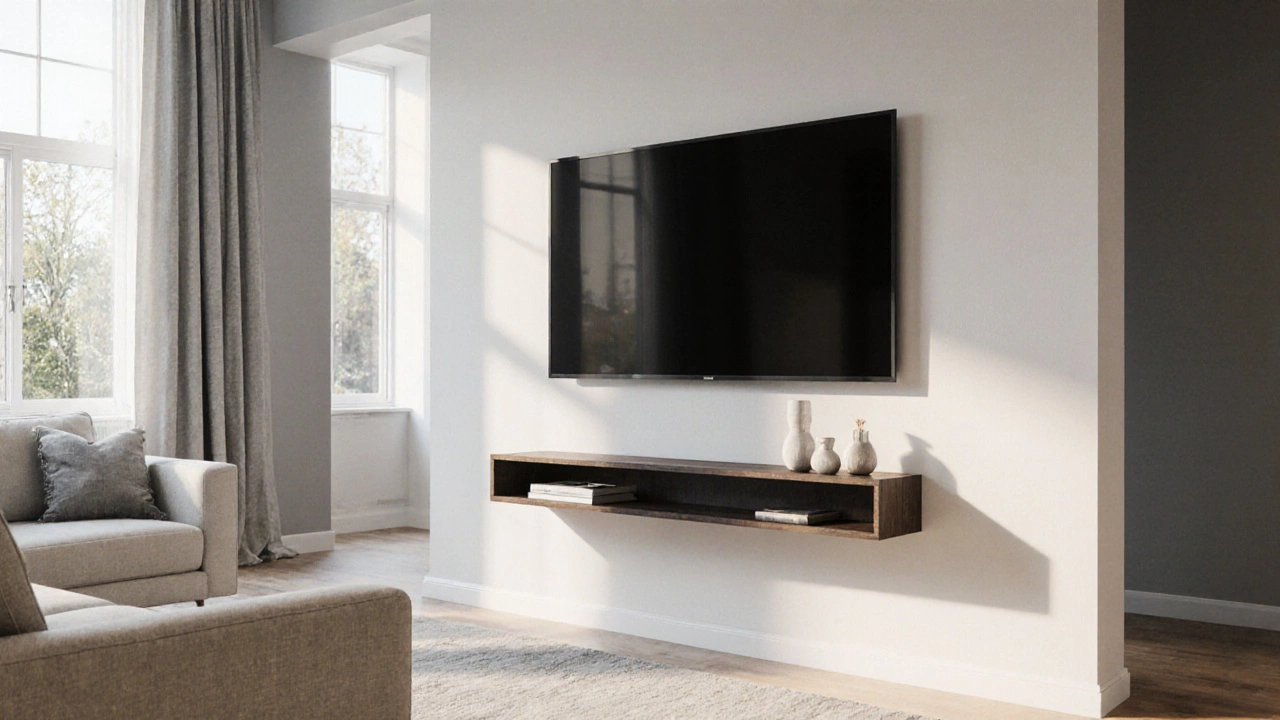
Creative Ways to Keep Your TV Up Without a Stand
Discover practical ways to keep your TV up without a stand. Learn wall‑mount, ceiling‑mount, floating shelf, and DIY options, plus safety tips and step‑by‑step guides.
When you think of a TV stand, a piece of furniture designed to hold a television and often store media devices. Also known as a media console, it’s more than just a base for your screen—it’s a central part of your living room layout. But not everyone wants or needs the bulky, one-size-fits-all TV stand that comes in stores. That’s where TV stand DIY, the practice of building or repurposing furniture to hold your TV without buying a pre-made unit comes in. Whether you’re working with limited space, a tight budget, or just want something that matches your style, making your own TV base gives you control over height, depth, materials, and storage.
Many people don’t realize that a TV stand alternative, any object or structure used to support a TV instead of a traditional stand can be just as functional—or even better. Think shelves, cabinets, crates, or even a sturdy wooden bench. You don’t need fancy tools or carpentry skills. A few screws, some brackets, and a level can turn an old bookshelf into a sleek media center. And if you’re worried about cable management, many DIY setups make it easier to hide wires than standard stands with their cramped back panels. The key is matching the height of your TV to eye level when seated, which most people get wrong with off-the-shelf models. A stand that’s too high or too low causes neck strain. A well-placed DIY solution fixes that.
Storage is another big reason people go the DIY route. A traditional TV stand might have two small drawers and call it a day. But if you’ve got game consoles, streaming boxes, soundbars, and a growing collection of DVDs or vinyl records, you need more than that. A custom-built unit can include hidden compartments, open shelves for decor, or even pull-out trays for your router. And if you’re in a small apartment, a wall-mounted TV with a floating shelf underneath gives you the look of a stand without eating up floor space. It’s not just about function—it’s about making your space feel intentional. You’re not filling a gap; you’re designing a feature.
There’s also the matter of durability. Store-bought stands made from particle board warp over time, especially under heavy TVs. A solid wood or metal frame you build yourself lasts longer and looks better doing it. Plus, you can adjust it later if you upgrade your TV or rearrange the room. And if you’ve ever tried to move a heavy TV stand through a narrow hallway, you know why lightweight, modular designs are worth considering. Some people even use stackable storage bins or industrial piping to create a minimalist, industrial look that’s easy to take apart and reassemble.
What you’ll find below is a collection of real-world examples—from simple shelf hacks to full custom builds—that show how people are rethinking TV placement. You’ll see how others solved the same problems you’re facing: too much clutter, awkward room layouts, or just wanting something that doesn’t look like it came from a catalog. These aren’t theoretical ideas. They’re proven setups used in homes across the UK, with photos, measurements, and material lists. Whether you’re handy with a drill or just want to repurpose what you already own, there’s something here that fits your skill level and style.

Discover practical ways to keep your TV up without a stand. Learn wall‑mount, ceiling‑mount, floating shelf, and DIY options, plus safety tips and step‑by‑step guides.